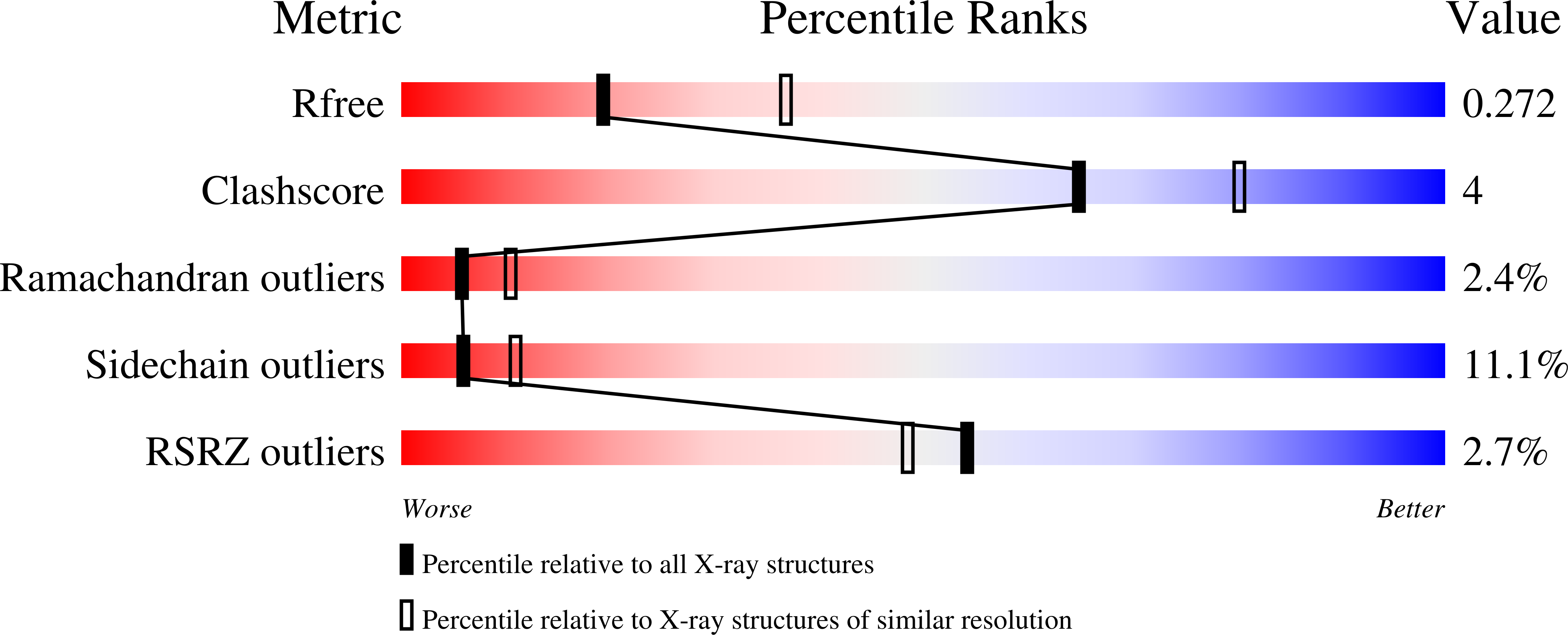Structural Basis of Protein Kinase R Autophosphorylation.
Mayo, C.B., Erlandsen, H., Mouser, D.J., Feinstein, A.G., Robinson, V.L., May, E.R., Cole, J.L.(2019) Biochemistry 58: 2967-2977
- PubMed: 31246429
- DOI: https://doi.org/10.1021/acs.biochem.9b00161
- Primary Citation of Related Structures:
6D3K, 6D3L - PubMed Abstract:
The RNA-activated protein kinase, PKR, is a key mediator of the innate immunity response to viral infection. Viral double-stranded RNAs induce PKR dimerization and autophosphorylation. The PKR kinase domain forms a back-to-back dimer. However, intermolecular ( trans) autophosphorylation is not feasible in this arrangement. We have obtained PKR kinase structures that resolves this dilemma. The kinase protomers interact via the known back-to-back interface as well as a front-to-front interface that is formed by exchange of activation segments. Mutational analysis of the front-to-front interface support a functional role in PKR activation. Molecular dynamics simulations reveal that the activation segment is highly dynamic in the front-to-front dimer and can adopt conformations conducive to phosphoryl transfer. We propose a mechanism where back-to-back dimerization induces a conformational change that activates PKR to phosphorylate a "substrate" kinase docked in a front-to-front geometry. This mechanism may be relevant to related kinases that phosphorylate the eukaryotic initiation factor eIF2α.





















